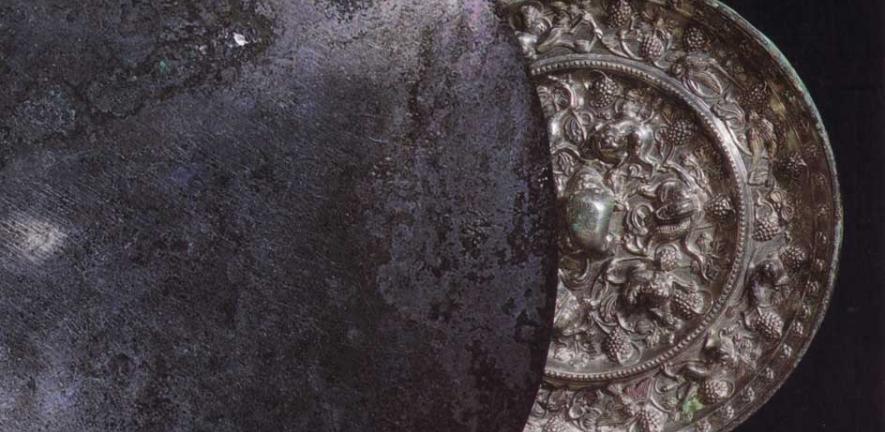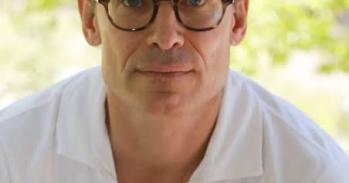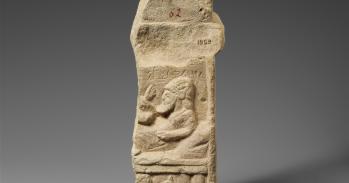
A lecture tomorrow by Professor Hung Wu is a rare opportunity to hear an eminent Chinese scholar talk about the ways in which the country’s artists have responded to huge social and political change over the last 40 years.
A lecture tomorrow by Professor Hung Wu is a rare opportunity to hear an eminent Chinese scholar talk about the ways in which the country’s artists have responded to huge social and political change over the last 40 years.
While standard art historical research focuses on concrete images and objects, Professor Wu is fascinated by all kinds of emptiness in architecture, pictorial representation, and design.
Reading Absence is the intriguing title of a series of lectures being given by Professor Hung Wu who is currently in Cambridge as the Humanitas Visiting Professor in Chinese Studies at the Centre for Research in the Arts, Social Sciences and Humanities (CRASSH). It’s a title that hints at an apparent paradox: often the power of the unseen is greater than the power of the seen.
An eminent scholar and curator, whose work crosses the boundaries of academic disciplines, interweaving art history and archaeology, anthropology and philosophy, Professor Wu is the Harrie A Vanderstappen Distinguished Service Professor in Art History and East Asian Languages and Civilizations at the University of Chicago.
As Director of the Center for the Art of East Asia and Consulting Curator for Smart Museum of Art, he has curated major exhibitions of Chinese art around the world. He is also the author of many publications that explore Chinese art and material culture from earliest times up to the present.
Professor Wu’s analytical and philosophical approach to art history reflects the fact that he was trained as an art historian as well as an anthropologist, first at the Central Academy of Art in Beijing and then at Harvard University. He is currently preoccupied with the notion of absence in art – a theme that encompasses loss, disappearance, omission and erasure – and its role in narrative. A lack of substance gives absence a quality that is at once timeless and immediate, fleeting yet permanent: there but not there.
While standard art historical research focuses on concrete images and objects, Professor Wu is fascinated by all kinds of emptiness in architecture, pictorial representation, and design. His lectures in Cambridge last week examined depictions of everyday objects such as mirrors and pillows as examples of things that remind us of what’s missing and what appear only to disappear once more, leaving no trace.
“The more you look for these ideas in the world around you – the sense of what’s missing, what’s impossible to depict – the more you see them everywhere. They appear throughout the history of art in all cultures. Early Chinese communities, for example, used markers to represent the spirits of their absent ancestors. Kings were too sacred, and too special to be shown, so that they were often represented by an empty throne,” said Professor Wu.
“Similarly, there are some things that are simply too weighty and horrifying to depict directly. In the case of genocide that is why an image of the empty space where a terrible event took place is more emotive than a photograph of dead bodies. Empty chairs are a theme you find throughout the history of art. Think of Van Gogh’s chair and Andy Warhol’s electric chair – because of the absence of someone in them, these are images that have a resonance that’s both personal and universal.”
In his lecture tomorrow (15 May), Demolition Projects: Absence as Memory, Professor Wu will look at the development of contemporary Chinese art over the last 30 or 40 years, a time of tremendous social transformation in China which has been accompanied by both huge construction and massive demolition. China’s artists depict the trauma felt by the population as it experiences such shifts and connects with the wider world after a period of isolation.
In 2010 Professor Wu curated Displacement: The Three Gorges Dam and Contemporary Chinese Art, at the Nasher Museum of Art at Duke University and the Smart Museum of Art at the University of Chicago. The show brought the work of four very different Chinese artists - Chen Qiulin, Yun-Fei Ji, Liu Xiaodong, and Zhuang Hui - to American audiences. These artists had used as the focus for their work the largest engineering project in human history. Constructed to provide a ninth of the country’s electricity, the Three Gorges Dam permanently submerged some 1,200 cities and villages and displaced more than a million people in central China.
Most striking about the artists’ responses was their nuanced attitudes and individual responses to the project. They were not merely documenting it or judging it in an overtly political manner; they were capturing the essence of this extraordinary re-working of the landscape and the communities within it.
In its faithfulness to the narratives that unfolded as the programme of displacement got under way, the work of Yun-Fei Ji is poignantly matter-of-fact in its recording of the tiny details of human life at a time of trauma. The element of absence in his ink-on-paper panorama, Water Rising, is the huge weight of water that will soon submerge the landscape for ever. Representing fragmentation, erasure and disappearance, his and other artists’ works touch the audience with a strong sense of transformation and transience.
On Thursday (17 May) Professor Wu will take part in a symposium at CRASSH on Writing, Art and Chinese Culture that will bring together international scholars in Chinese art, literature, calligraphy to engage in a cross-disciplinary discourse.
Both the lecture on 15 May and the symposium on 17 May will take place at CRASSH. The events are free and open to the public. For more details go to http://www.crassh.cam.ac.uk.
This work is licensed under a Creative Commons Licence. If you use this content on your site please link back to this page.





